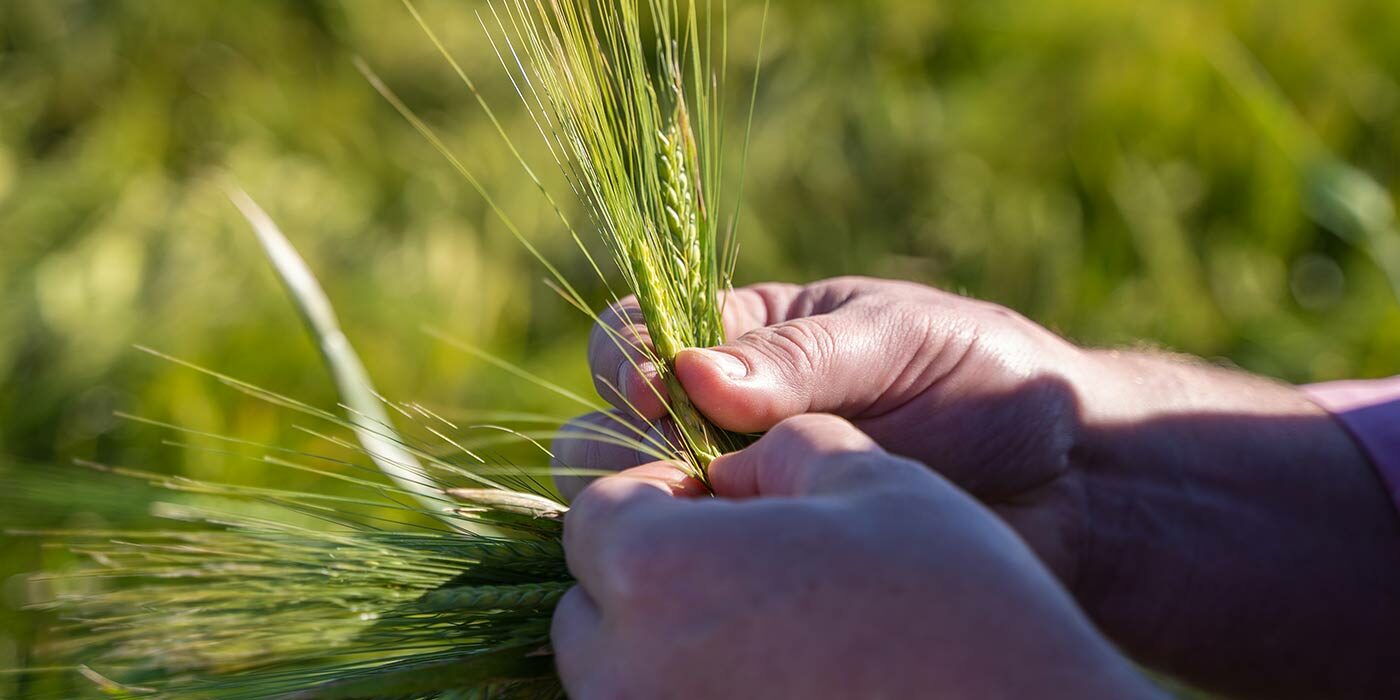By EPG Seeds
9th December 2021

Every growing season Aussie farmers have a lot of decisions to make.
One of those decisions is not only what seed to plant, but whether to buy in seed or hold back some of this year’s harvest for next season.
While its always recommended to introduce a percentage of new seed every year bought from a reputable seed producer, retaining seed has the advantage of being readily available, with only out-of-pocket costs for cleaning and monitoring. However, selecting the right seed through to how it is treated at harvest and kept in storage is key to ensuring it maintains its viability for next year.
Before you make the decision to retain your seed from harvest this year, consider these rules of thumb to ensure next season isn’t compromised.
The basic rules
Choose the right seed, from the right paddock
While saving your own seed offers greater flexibility and control, growers should be very selective about the seed they save.
Retained seed should ideally come from pure variety crops rather than a hybrid variety where you risk the seed reverting to the previous generation and not producing true-to-type. The result can be a loss of the hybrid’s vigour, yield and disease resistance.
Paddock selection is also an important part of choosing the right seed for saving. The cleanest paddocks with minimal weed seed contamination should be selected to ensure seed purity. It’s also a good idea to select the most fertile paddock as more productive soil can lead to higher nutrient concentrations in the seed.
Harvest in the right conditions
Harvesting the crop in the right conditions is another major factor in ensuring your farm-saved seed is top notch.
It’s best to harvest at low moisture and in cool temperatures if possible. Weather-damaged grain is also more susceptible to poor germination and vigour degradation, so make sure you harvest before any rain (not always easy we know)!
If you do keep seed after rain, its recommended to use laboratory testing (not do-it-yourself) for checking germination and vigour immediately after harvest to check the germination percentage.
Prioritise grain hygiene and monitoring
Seed retained for planting is a highly valuable asset. The way it is treated in on-farm storage is the final step in ensuring that the quality is not compromised.
Successful storage requires protecting your grain from insect or animal pests, mould and any physical contaminants. Monitoring your stored seed at least monthly is essential as it allows early action to be taken if insects or grain quality issues arise. You can learn more about how to correctly store your grain in our article, Tips for storing grain this harvest.
Getting seed from your neighbours
While you might be tempted to trade seed “over the fence”, planting uncertified seed adds an unknown level of risk to your production.
As well as uncertainty around the seed’s purity and germination, getting seed from your neighbours also poses a biosecurity risk through the introduction of new weeds and diseases.
Growers should also be aware of Plant Breeder Rights (PBR). Administered under the Plant Breeder’s Rights Act 1994, Plant Breeder Rights are exclusive commercial rights for a registered variety of plant. If you purchase PBR protected seed, there are no restrictions on the use of that particular batch of seed on your own farm. You are not, however, permitted to produce propagating seed to resell or trade (unless you are licenced or the conditions allow you to).
So before you think about trading seed with your neighbour, make sure you’re not on the wrong side of the law by visiting Variety Central and checking any restrictions or royalties on the seed. For your convenience EPG Seeds include information about relevant PBR on their varieties pages.
How to test seed
After retaining and storing your seed, it’s important to ensure it is actually viable by checking the germination percentage.
Germination should be checked at harvest, during storage and again before planting. Knowing the germination percentage at harvest will assist with your planting quantity for next season and determine how much seed you need to keep.
At a minimum, all farm-saved seed should be laboratory tested no less than two months prior to planting at a quantity of 1kg for every 25,000kg. Laboratory tests can also provide valuable weed and disease testing to help ensure the purity of the seed and identify potential soil borne diseases.
We’ve put together the following list of some of the popular seed testing services.
- WA Department Primary Industries and Regional Development – Diagnostic Laboratory Services
- SA Department Primary Industries and Regions – Seed and Plant Pathology
- Plant Science Consulting
- Feed Test
- Futari
- SGS
Do-it-yourself testing
While testing seed at a laboratory offers more accurate results, growers can also do a simple germination test at harvest themselves.
- Simply collect and count approximately 100 seeds from each lot to be planted.
- Lay the seed between moist paper towels before placing in a sealed plastic bag and leaving them for five to seven days in a warm place.
- Finally, determine the germination percentage (GP) by counting the number of seeds that have not germinated. GP = seeds germinated/total seeds x 100.
While retaining seed for next season could save up-front seed cost, keep in mind it could cost you in yield and additional labour and resources to store and monitor it. Getting the most from your retained seed is all about growing and selecting the right seed, as it is about storing and testing it correctly.
With some forward thinking and careful preparation however, you can ensure your retained seed is viable and that you set the next season up for success.